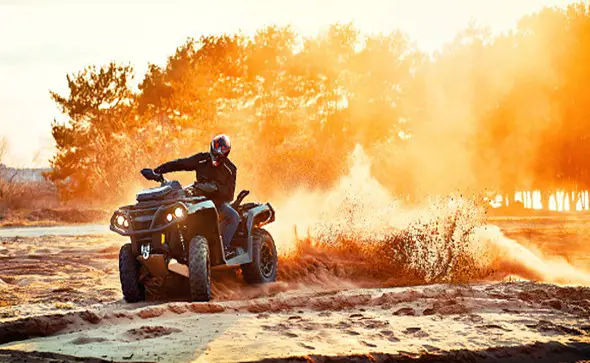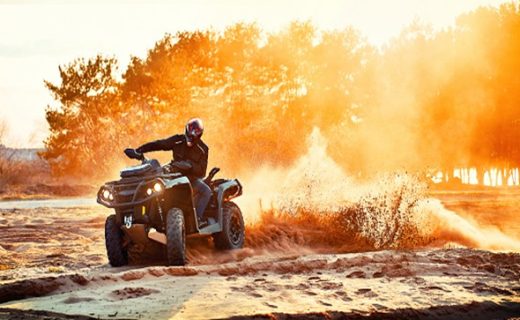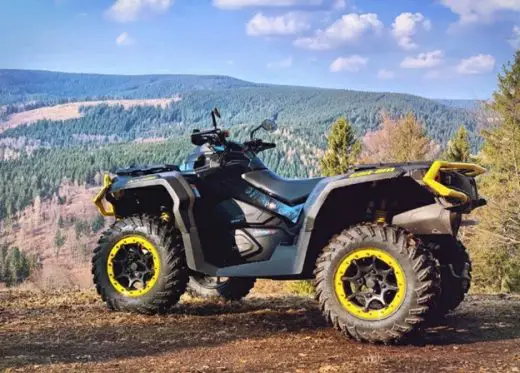9 reasons to consider used ATV parts, All-terrain vehicle guide, Online off-road car advice
9 Reasons to consider Used ATV Parts for Your all-terrain vehicle
5 Jan 2022
You all like riding ATVs on difficult terrains such as dunes, trails, and mud runs; the more difficult the terrain, the better! However, harsh riding takes its toll on quads, and you’ll soon be replacing parts. If you’re planning on fixing or upgrading your machine, you’ve probably looked into the cost of OEM replacements and used and aftermarket ATV components.
What Are Used ATV Parts?
Used ATV parts and accessories are parts and accessories taken from retired ATVs, either because they are no longer functioning or because they are improved. These days, many buyers rely on used ATV parts for lower-cost ATV replacement components.
Compared to OEM and aftermarket parts, second-hand ATV parts are the most cost-effective solution to replace components. Other stores sell used bike parts.
Installing them might be hit or miss. You never know what you’ll get when you purchase used ATV parts canada. So before you buy, make sure all of the parts operate properly – which might be tough to verify if you’re buying online or a sophisticated device you can’t get inside. Unfortunately, good used ATV parts are hard to come by. Even if the merchant states it is from low-mileage ATVs, a cheap one may have substantial wear.
Difference between New Vs Used ATV
All-terrain vehicles may be rather costly, which may surprise you. Many first-time purchasers wrongly believe they’ll cost roughly the same as a dirt bike, even though the typical one costs about $7,000. Many old ATVs are available at inexpensive costs because of the expanding demand for these off-road dynamos.
Although new automobiles are nearly always preferred, there are a variety of reasons why you may want to purchase a used vehicle. The price is the first and most evident. Pre-owned three and four-wheelers, like vehicles, depreciate quickly. In the first three years of ownership, most cars lose 50% of their value. That doesn’t mean that all of these models are in good working order.
9 Things You Must Know Before Buying a Used ATV
Following are the nine things to consider before buying a used ATV:
1. Examine the tyres for any cracks
To begin, shine a flashlight on either side of the tires and along both sidewalls for evidence of cracks or a missing rubber piece, and atv parts, like automobile tires, crack and age.
It is risky to ride on fractures after they have formed. Therefore, if one tyre is damaged and the others get the same amount of wear, the whole set should be replaced.
2. Ball joints and bearings
Check the tyre by rocking it in and out, jacking one side up, and holding it at the positions of 12:00 and 5:00. After that, rock the tyre in and out to see if there’s any play. You’ve got a faulty ball joint or any of the wheel bearings.
In usage, severely worn ATV bearings detach, resulting in significant human harm. However, you’ll feel instability when turning around corners before this occurs, and if this thing happens, the opposite side is likely to be worn as well.
3. Examine the shocks
Look for damp patches around the top of this shock for symptoms of leaking. Whether you see damp areas, rub your finger over the region to see if it’s greasy. If it is, the shocks are often worn. Shocks worn out don’t attenuate spring oscillations, causing your tyres to spend longer time in the air after each and every bounce. In the end, this affects the machine’s stability, and leaking is a definite symptom of wear.
4. Inspect the CV boots
Examine the CV boots, which are also called constant velocity boots, they carry oil within the rotating joint in this step.
The grease allows water and sand and eventually damages the joint if it splits apart or wears between the pleats or band clamps. New boots may cost up to $150 a piece, and if the joint is broken, it will need to get replaced.
All eight joints must be examined. Remove the splash guards and inspect both the inner and outer velocity boots on most of the axle for oil indications. Next, separate the pleats and inspect them for minor splits and cracks and any oil that may have split from the clamps in the surrounding region.
5. Check for leaks in engine
Oil leaks on valve covers may be very expensive. So before you buy, look for indicators of this. For example, if there are indications of new oil on a clean towel wiped around the valve cover, the gaskets need to be replaced.
6. Always pull the air cleaner cover.
It is not expensive to change an air filter. However, while you remove the cover, a substantial build-up of dirt indicates inadequate care by the previous owner. If you notice mice or any other rodents, you need to walk away from the deal right away since they are all symptoms of bad upkeep.
6. Inspection of the brakes
You should inspect your brakes regularly. Deep gouges on the rotor need to be checked, as caliper leaks. An inspection mirror may be used to assess the thickness of all the brakes. Your ATV pads, on the other hand, are often thin, making wear difficult to detect. In the end, you want to prevent metal-on-metal contact since it might be expensive.
It’s possible that the material of friction is delaminating or cracking from the backing plate, even though the pad is substantial.
To examine the whole braking system, you’ll need to jack each and every side up and then slowly remove the pads, caliper, and wheels.
7. Conducting a fluid analysis
You should inspect the oil for metallic particles. Begin by removing the dipsticks from the engine and gearbox and inspecting them for correct appearance and level. If any metallic particles are found, the machine should not be purchased. You can also read more about how to maintain your atv, utv, and dirt bike parts to keep your vehicle perfect, and fine.
8. Chain and sprocket
Check for sprocket wear if your ATV runs on a chain. The sprocket set and chain will cost about $300, including parts and labor if there are symptoms of wear.
9. Test the ride
The ride must also be tested, which is a crucial examination element. There should be an instant burst of life while turning the key on and rev the engine over.
If the engine takes a long time, doesn’t start at all, or the battery is fully dead, you should be concerned.
Conclusion
While purchasing an ATV might be thrilling, you must ensure that you make the best decision possible.
So, just because you find a wonderful bargain doesn’t imply you won’t find more. Instead, you will discover a ATV that is appropriate for you if you stay patient and remember to exercise due research while purchasing.
Comments on this guide to 9 reasons to consider used ATV parts article are welcome.
Building and Real Estate
Real Estate Posts
First Time Replacing Your Roof
How to Know If a Plumber is Good
Mistakes People Make When Hiring Realtors
Building Articles
Architecture
Comments / photos for the 9 reasons to consider used ATV parts advice page welcome



